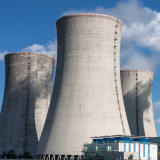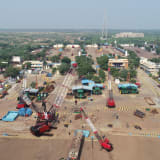
What is really behind the divergence between Chinese iron ore imports and apparent consumption over the past several months? In the first four months of the year Chinese iron ore imports increased to 411.8 mt, up 7.2% yoy, whilst reported crude steel production fell to 342.2 mt, down 4.2% yoy.
To fully understand the supply/demand balances for Chinese iron ore we need to account for:
- Differing quality (Fe-content) of imports from different sources
- Domestic production (quantity and quality)
- Changes to iron ore stockpiles
- Re-exports of iron ore
- Pig iron production (a more accurate picture of iron ore consumption than crude steel production)
Yet even accounting for these factors there is an apparent discrepancy somewhere in the data. Based on SSY’s assessment of each of these factors, and the data available to us there seems to be almost 110 mt 62% Fe equivalent of iron ore unaccounted for on the balance sheet (or around 27 days of consumption).
There are several possible explanations for this:
- Reported iron ore imports are too high and in reality have been lower.
- Reported exports are too low and in reality have been higher.
- Reported domestic production is too high and in reality has been lower.
- Our assessment of the Fe content of domestic production is too high and in reality it has declined sharply.
- Reported pig iron production (and implied iron ore consumption) is too low and in reality has been higher.
- Reported stockpiles are too low and in reality are higher.
We have little reason to doubt our figures for iron ore imports – vessel tracking data largely corroborate with official Chinese customs data. If anything, vessel tracking data suggest imports are slightly higher than customs data show. Some of this disparity may be explained by adjustments for moisture content (official Chinese customs numbers are adjusted for moisture content to report on a dry basis). Nevertheless, if we assume that supply and demand for iron ore in China have balanced in the past, this makes very little difference to the overall picture, only having an impact on the implied Fe content of domestic iron ore production (the endogenous factor in our model).
Iron ore re-exports figures are also very closely matched between vessel tracking data and customs data, so again we have very little reason to doubt the figures here.
Points 3-5 are a little more difficult to conclude on. Official Chinese statistics are notoriously unreliable, in part due to top-down growth objectives and conflicting incentives on a regional and national level to under/overreport. A well-known example is the observation Chinese annual crude steel production in 2023 happened to end at exactly the same level as that of 2022, following short-lived apparent production reductions towards the end of the year. Official pig iron production (the driver of consumption in our model) followed a very similar trajectory to crude steel production.
Data on domestic production is also potentially unreliable, and we have little insight into the quality (Fe content) except general knowledge that run-of-mine output is of low quality compared to Australian and Brazilian ore (potentially below 30%) and in decline. While we treat Fe content partly as an endogenous factor in our supply/demand balance, we apply a smoothing effect (moving average) in an effort to avoid a circular argument. It’s worth noting that if we were to account for all the apparent divergence in question through a change in Fe content of domestically produced iron ore we would need to assume that the Fe content of Chinese production dropped to 0% or perhaps negative in Q4 23, which is clearly impossible.
Industry standard stockpile data come from a sampling of the main ports around China – in our case 42 ports. Stockpile levels at these 42 ports reached almost 147 mt at the end of April, the highest since Apr 2022 and up 36% from the recent low in Oct 2023. Whilst these inventory figures are usually representative, as evidenced by the historic stability of the supply/demand balance, it is possible that there has been a recent increase in stockpiles elsewhere, particularly given the surprising strength in imports from Brazil.
Our main conclusion is that most of the apparent 110 mt surplus to the Chinese iron ore market is likely driven by ‘inconsistencies’ in official Chinese pig iron production data. When compared to the scenario in which there is an extra 110 mt present in off balance stockpiles, this is clearly a positive for the freight market.
Nevertheless, the story of increasing Chinese imports feeding stockpiles would resonate with similar stories for other commodities such as crude oil and copper. Copper inventory reached an all-time high of 261mt on 7th June. Anecdotally there are reports that traders are speculating on a devaluing yuan by increasing inventories of dollar priced commodities.
By William Tooth, Senior Analyst, SSY Research
Articles
You may also be
interested in
View allGet in touch
Contact us today to find out how our expert team can support your business















